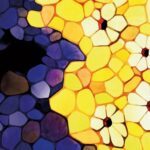About
Cell Death and Epithelial Homeostasis (Department of Developmental and Stem Cell Biology) – Romain Levayer
Our unit is deciphering the multilayered regulation of epithelial cell death, from the role of mechanical stress, local and global feedback to the single cell decision to die downstream of caspases activation. Using a combination of quantitative live imaging, machine learning, optogenetics, genetics and modeling in Drosophila, we are testing how the fine tuning of cell death can impact tissue growth, tissue morphogenesis and generate competitive interactions between pre-tumoural cells and their WT neighbours.
Stem Cells and Development (Department of Developmental and Stem Cell Biology) – Shahragim Tajbakhsh
Our lab investigates multiple aspects of stem cell biology in the context of development, growth, regeneration, ageing and disease. The focus is on skeletal muscle using genetically modified mice. The context of prenatal and postnatal development is examined in mouse, and processes are considered in an evolutionary context. Basic cellular processes including cell quiescence, modes of proliferation (symmetric/asymmetric) and lineage progression in normal and pathological conditions are being investigated. Pathology models include those that perturb muscle function (ex. Myopathies) or indirectly (ex. influenza virus infection; cancer cachexia).
Zebrafish Neurogenetics (Department of Developmental and Stem Cell Biology) – Laure Bally-Cuif
Our team studies the principles and mechanisms that control the formation, maintenance, and recruitment of neural stem cells (NSCs) in the adult vertebrate brain. We investigate fundamental NSC decisions such as the quiescence-proliferation balance, the choice of cell division mode, and lineage progression towards the generation of neurons. Our main model system is the telencephalon of the adult zebrafish, where NSCs are numerous and easily accessible for experimentation in vivo; and our approaches include functional genetics, lineage tracing, intravital imaging, quantitative image analysis and modeling. When molecularly relevant, we extend to human brain organoids to probe the function of candidate pathways in human neural progenitor cells.
Human Developmental Genetics (Department of Developmental and Stem Cell Biology) – Ken McElreavey
We are creating human organoids that precisely mimic the in vivo specification and differentiation of the human gonads (ovary or testis) from pluripotent stem cells. These gonadal organoids are used to determine gene regulatory networks involved in regulation of reprogramming, cell fate choice as well as tissue and organ formation. We use these models to study naturally-occuring genetic variants that cause gonadal disease (sex-reversal; physiological tissue homeostasis and its alterations) and how these genetic variants cause tissue/organ remodelling. We have developed these technologies ourselves in the unit from human iPSCs – organoids, gonad on a chip (the later in collaboration with Samy Gobaa).
